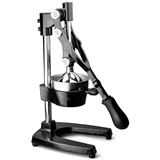Electric vs. Manual Sushi Makers: Choosing the Best Option for Your Restaurant
Sushi has become a staple in many restaurants worldwide, from upscale dining experiences to casual eateries. As demand grows, restaurants must find efficient and reliable methods to prepare high-quality sushi that meets customer expectations. One of the essential tools for sushi production is the sushi maker. But with various options on the market, including electric and manual sushi makers, how do you choose the right one for your restaurant?
In this article, we’ll explore the features of both types, including specialised tools like sushi roll makers and sushi rice makers, to help you make an informed decision that aligns with your restaurant’s needs.
Electric Sushi Makers for Restaurants
-
Features and Functions
Electric sushi makers are designed to automate key steps in sushi preparation, making them highly efficient for restaurant use. Some key features include:
-
Automatic Rice Cooking and Rolling: Automatic sushi makers handle the shaping and assembling of sushi, providing consistency and saving time. However, the rice must be cooked and seasoned beforehand, as the machine focuses only on forming the sushi.
-
Built-in Timers and Customise Settings: Many electric sushi makers come with adjustable settings to fine-tune the machine for different sushi types. These settings make it easy to produce sushi in large quantities with consistent quality.
-
-
Pros of Electric Sushi Makers
-
High Efficiency and Speed: Electric sushi makers are perfect for high-volume restaurants to prepare large amounts of sushi quickly without sacrificing quality.
-
Consistency in Sushi Quality and Presentation: Automation ensures that each roll is made with the same size, helping maintain uniformity in sushi appearance and taste.
-
Reduced Labour Costs: Automating the rice cooking and rolling processes, these machines can help reduce the need for skilled labour, lowering overall staffing costs.
-
-
Cons of Electric Sushi Makers
-
Higher Upfront Investment: Electric sushi makers can be expensive, especially for smaller restaurants. Limited budgets may make the cost a barrier for businesses.
-
Maintenance and Repair Considerations: Like all machines, electric sushi makers require regular maintenance and may occasionally need repairs, adding to the overall cost of ownership.
-
Dependence on Electricity: These machines rely entirely on electricity, which means they are vulnerable to power outages or technical issues that could disrupt sushi production during peak hours.
-
Manual Sushi Makers for Restaurants
-
Features and Functions
Manual sushi makers rely on traditional techniques and tools to prepare sushi. Key aspects include:
-
Traditional Rolling Techniques and Tools: Manual sushi makers require hand-rolling and shaping, often using bamboo mats and knives, giving chefs more control over the final product.
-
Manual Rice Preparation and Rolling: Chefs must prepare the rice and manually roll each piece of sushi, which allows for more customisation and demands skill and attention.
-
-
Pros of Manual Sushi Makers
-
Labour-Intensive and Time-Consuming: Manual sushi making requires more time and effort, which can slow down service, especially during busy periods.
-
Sushi Quality Based on Staff Skill Level: Sushi quality can vary depending on the chef's skill, affecting consistency in taste, presentation, and portion sizes.
-
Space for Storage and Operation: Manual sushi tools take up less space than electric machines, but they still require a dedicated prep area, which could be an issue for smaller kitchens.
-
Comparison of Key Factors for Restaurant Use
-
Cost Considerations
When comparing electric and manual sushi makers, restaurants should consider the upfront cost and long-term expenses. Electric sushi makers have a higher initial price but can save money over time by reducing labour and increasing production speed. Manual sushi makers are less expensive at first, but relying on skilled staff may result in higher long-term costs, especially in busy settings.
-
Skill Level of Staff
Electric sushi makers are easier to use and require less training, allowing less experienced staff to create consistent sushi quickly. In contrast, manual sushi makers demand skilled workers who know traditional sushi-making techniques.
-
Efficiency and Output
Electric sushi makers are ideal for high-volume production in restaurants, enabling quick preparation of large quantities of sushi. Manual sushi makers are better suited for smaller restaurants with less demand, but they are slower and may limit output during busy hours.
-
Maintenance and Cleaning
Electric sushi makers require regular maintenance and can be more complex to clean, which may result in downtime for repairs. Manual sushi makers are simpler to maintain and clean, but the hands-on process requires frequent cleaning of tools and surfaces, taking additional time.
Conclusion
In conclusion, selecting the right sushi maker is essential for meeting customer demand for high-quality sushi while ensuring efficiency. Electric sushi makers are great for high-volume restaurants, offering speed and consistency, but they require a higher initial investment and rely on electricity.
In contrast, manual sushi makers are more affordable and allow for creative control, making them suitable for restaurants that emphasise artisanal sushi. However, they are more labour-intensive and depend on skilled staff.
Perfect Your Sushi Production – Get a Custom Quote!
Don’t miss out on the opportunity to elevate your restaurant's sushi. Reach out today for a personalised quote on a Nigiri Sushi Machine and see the difference!
FAQ:
-
What is the main difference between electric and manual sushi makers?
Electric sushi makers automate key steps like rolling and forming sushi, while manual sushi makers require traditional hand-rolling techniques, giving chefs more control over the process.
-
Which type of sushi maker is better for high-volume restaurants?
Electric sushi makers are ideal for high-volume restaurants, as they increase efficiency and ensure consistency, making them perfect for quick, large-scale sushi production.
-
Are manual sushi makers more affordable than electric ones?
Yes, manual sushi makers generally have a lower upfront cost, making them more affordable, especially for smaller restaurants. However, they may require more skilled labor and time.




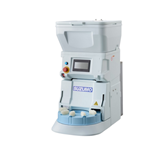
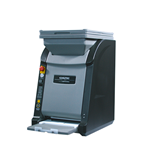



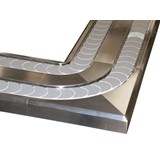
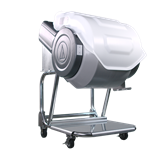
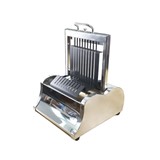
-160x160-state_article-rel-cat.jpg)

